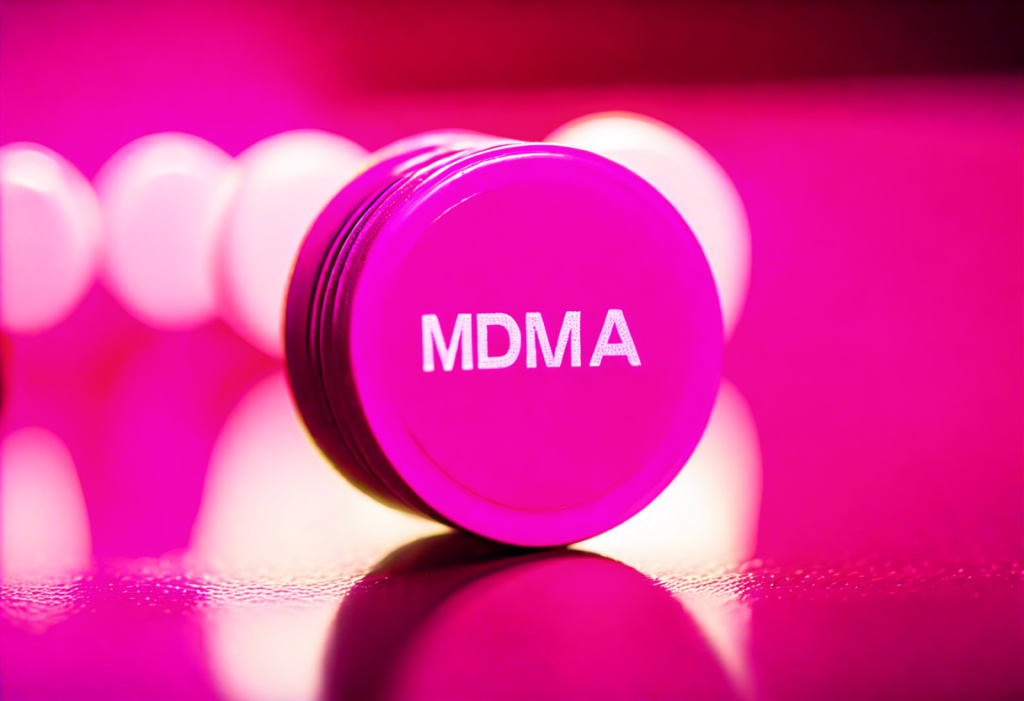The Physical Effects of Consuming Molly
Molly, also known as MDMA or ecstasy, is a popular recreational drug known for its euphoric and empathetic effects. While it may offer temporary feelings of happiness and increased sociability, it also carries a range of physical effects that users should be aware of. Understanding these effects is crucial for making informed decisions and prioritizing one’s well-being.
One of the primary physical effects of consuming Molly is an increase in heart rate and blood pressure. As the drug enters the bloodstream, it stimulates the sympathetic nervous system, leading to a surge in heart activity and vasoconstriction. This can result in an elevated heart rate and an increase in blood pressure, potentially putting strain on the cardiovascular system.
Another noticeable effect of Molly is dehydration. The drug is known to cause a reduction in the body’s ability to regulate its water balance. Users often experience dry mouth, excessive sweating, and increased body temperature, all of which can contribute to dehydration. It is crucial to stay properly hydrated while consuming Molly by drinking water regularly to minimize the risk of dehydration.
In addition, Molly can cause an imbalance in neurotransmitters, particularly serotonin. Serotonin is a chemical involved in mood regulation, appetite, and sleep. Consuming Molly increases serotonin release, leading to a pleasurable effect. However, the subsequent depletion of serotonin can result in a temporary serotonin crash, which can lead to feelings of depression, anxiety, and sadness in the days following MDMA use.
Another potential physical effect of consuming Molly is jaw clenching and teeth grinding, also known as bruxism. This involuntary movement is a common side effect of MDMA use. Users may experience discomfort, soreness, and even dental problems as a result. It is advisable to use a proper mouthguard or to chew gum to help alleviate these symptoms.
Furthermore, Molly can also lead to hyperthermia, a condition characterized by abnormally high body temperature. This is particularly concerning in crowded environments such as parties or raves where individuals may engage in vigorous physical activity without taking breaks. Hyperthermia can lead to serious health complications, including organ failure, and necessitates immediate medical attention.
While Molly may offer temporary feelings of euphoria and sociability, it is crucial to be aware of the physical effects it can have on the body. These effects include an increase in heart rate and blood pressure, dehydration, serotonin imbalance, jaw clenching and teeth grinding, and the potential for hyperthermia. Prioritizing one’s well-being and making informed decisions about drug use is essential to ensure a safe and healthy experience.
Understanding the Short-Term Side Effects of Molly
Molly, also known as MDMA or ecstasy, is a synthetic drug that alters mood and perception. While the drug is often associated with euphoria and heightened sensory experiences, it also comes with a range of short-term side effects that users should be aware of. These effects can vary depending on the individual and the dose taken.
When Molly is ingested, it acts on the brain by increasing the levels of neurotransmitters such as serotonin, dopamine, and norepinephrine. This surge in neurotransmitters results in feelings of euphoria, increased energy, and heightened sociability. However, as the effects of Molly wear off, users may experience a variety of undesirable side effects.
One of the common short-term side effects of Molly is vomiting. While not everyone who takes Molly will experience this symptom, it can occur due to various reasons. The drug affects the serotonin levels in the digestive tract, which can lead to nausea and vomiting. Additionally, Molly can increase body temperature, causing dehydration, which may also contribute to vomiting.
In addition to vomiting, other short-term side effects of Molly include:
- Increased heart rate and blood pressure
- Muscle tension and jaw clenching
- Dilated pupils and blurred vision
- Teeth grinding
- Loss of appetite
- Heightened senses
- Insomnia
- Restlessness
- Increased body temperature
It is important to note that some of these side effects can potentially be dangerous. The increase in heart rate and blood pressure caused by Molly can put strain on the cardiovascular system, especially in individuals with pre-existing heart conditions. The rise in body temperature can also lead to dehydration and, in severe cases, heatstroke.
Recognizing the signs of Molly overdose is crucial in order to seek immediate medical attention. Some symptoms of overdose may include:
- Extreme confusion or disorientation
- Blurred vision or fainting
- Seizures
- Severe anxiety or panic
- Nausea and vomiting that persists
- Loss of consciousness
- Irregular or rapid heartbeat
If you or someone you know exhibits any of these symptoms after taking Molly, it is essential to call emergency services right away.
Understanding the short-term side effects of Molly is crucial for anyone considering using or currently using the drug. These effects can range from vomiting and other physical symptoms to more severe complications like overheating and overdose. It is important to exercise caution when using Molly and to seek help if any concerning symptoms arise.
The Physical Effects of Consuming Molly
Molly, also known as MDMA, is a popular party drug that is known for its euphoric and empathogenic effects. However, along with its pleasurable effects, Molly can also have a range of physical effects on the body. Understanding these effects is crucial for individuals who are considering using Molly or for those who want to educate themselves on the dangers of its use.
One of the most common physical effects of consuming Molly is dehydration. The drug increases body temperature and causes excessive sweating, which can lead to a significant loss of fluids in the body. Dehydration can result in symptoms such as dry mouth, thirst, and dizziness. To mitigate the risk of dehydration, it is essential to drink plenty of water or electrolyte-rich beverages while using Molly.
Another physical effect of consuming Molly is an increase in heart rate and blood pressure. The drug stimulates the release of serotonin, dopamine, and norepinephrine, which can cause an acceleration in heart rate and raise blood pressure levels. Prolonged use of Molly can put excessive strain on the cardiovascular system and lead to serious health complications, including heart palpitations and even heart failure.
Additionally, Molly use can result in involuntary jaw clenching and teeth grinding, also known as bruxism. This physical side effect often occurs due to the stimulant properties of the drug. Bruxism can lead to jaw pain, tooth damage, and headaches. It is recommended to chew on a gum or a soft object to alleviate jaw tension and minimize the risk of dental problems.
Molly can also impair the body’s ability to regulate its temperature, leading to hyperthermia or overheating. This condition can be life-threatening if not addressed promptly. Symptoms of hyperthermia include excessive sweating, rapid breathing, confusion, and even seizures. If someone on Molly exhibits signs of overheating, immediate medical attention is crucial to prevent further complications or even death.
Molly use can have various physical effects on the body, including dehydration, increased heart rate and blood pressure, bruxism, and risks of overheating. It is important to understand these effects before deciding to use Molly, as they can pose serious health risks. If you or someone you know is struggling with Molly use or experiencing any of these physical effects, seek medical help and support immediately. Stay informed and prioritize your health and well-being above all else.
The Physical Effects of Vomiting on Molly
Molly, also known as MDMA or ecstasy, is a popular recreational drug that produces euphoria and heightened sensations. Unfortunately, the use of Molly can also lead to undesirable side effects, including vomiting. Vomiting on Molly can have physical effects on the body that are important to understand.
When Molly is ingested, it interacts with certain neurotransmitters in the brain, such as serotonin, dopamine, and norepinephrine. These neurotransmitters are responsible for regulating mood, pleasure, and other bodily functions. However, excessive consumption of Molly can disrupt the delicate balance of these neurotransmitters, leading to nausea and vomiting.
Vomiting on Molly is the body’s way of expelling the substance and trying to restore equilibrium. The physical act of vomiting can cause dehydration and electrolyte imbalances, which can further exacerbate the negative effects of the drug.
In addition to the immediate physical effects, vomiting on Molly can also have long-term consequences on the body. Repeated vomiting episodes can damage the esophagus and stomach lining, leading to conditions such as gastroesophageal reflux disease (GERD) or gastritis.
Furthermore, vomiting on Molly can be a sign of an overdose, which can have severe physical consequences. An overdose occurs when the body is unable to process and eliminate the drug effectively, leading to an accumulation of toxic levels in the system. Symptoms of an overdose can include rapid heartbeat, high blood pressure, seizures, and loss of consciousness. In such cases, immediate medical attention is crucial.
It is important to note that vomiting on Molly may also be a result of consuming adulterated or tainted substances. Molly is often mixed with other substances, such as caffeine, amphetamines, or even toxic chemicals. These additional substances can increase the likelihood of adverse physical effects, including vomiting.
Vomiting on Molly can have various physical effects on the body. From disrupting neurotransmitter balance to causing dehydration and potential long-term damage to the gastrointestinal system, it is important to understand the risks associated with this side effect. If you or someone you know experiences vomiting while on Molly, it is essential to seek medical attention and be mindful of the potential dangers of Molly use.
Long-Term Health Risks Associated with Molly Use
Molly, also known as MDMA or ecstasy, is a popular party drug that is often associated with euphoria, increased sociability, and heightened sensations. While the short-term effects of Molly can be enticing, it is important to understand the potential long-term health risks associated with its use.
One of the primary concerns with long-term Molly use is its impact on brain function. MDMA affects the brain’s neurotransmitters, specifically serotonin, which plays a crucial role in regulating mood, appetite, and sleep. Prolonged use of Molly can lead to a depletion of serotonin, causing a decrease in overall mood and potentially leading to depression, anxiety, and memory deficits.
Additionally, repeated use of Molly can result in damage to the brain’s neurons and overall neurotoxicity. Studies have shown that individuals who use MDMA regularly may experience long-term cognitive impairments such as reduced attention, learning difficulties, and problems with executive functioning. These effects can persist even after cessation of Molly use, emphasizing the importance of understanding the potential long-term consequences.
Another concerning aspect of long-term Molly use is its impact on cardiovascular health. MDMA is known to increase heart rate, blood pressure, and body temperature. Prolonged and excessive use can lead to cardiovascular complications such as heart palpitations, arrhythmias, and even heart failure. These risks are further amplified in individuals with underlying heart conditions or those who engage in physical exertion while under the influence of Molly.
Furthermore, Molly use is often accompanied by prolonged periods of physical activity and dancing, as individuals feel energized and more compelled to move. These prolonged periods of physical exertion, combined with the increased body temperature caused by Molly, can result in dehydration, heatstroke, and heat exhaustion. It is vital to stay hydrated and take breaks from physical activity to prevent potential serious health risks.
While Molly may provide short-term effects of euphoria and sociability, it is essential to consider the potential long-term health risks associated with its use. Prolonged MDMA use can lead to serotonin depletion, brain damage, cognitive impairments, and cardiovascular complications. Additionally, the combination of physical activity and increased body temperature while on Molly can result in dehydration and heat-related illnesses. It is crucial to prioritize one’s health and make informed decisions when considering the use of Molly or any other substance.
Conclusion
Molly, the common name for MDMA, is a powerful drug that can lead to various physical effects when consumed. Understanding the short-term side effects is crucial for users, as it helps them recognize the signs of a potential overdose. One of the most common reactions experienced by users is vomiting, and knowing how to effectively handle such an episode is essential for both safety and well-being. However, it is worth noting that the short-term side effects of Molly are not the only concerns. There are also long-term health risks associated with its use that individuals must be aware of.
Consuming Molly can result in several physical effects, ranging from increased energy and elevated mood to heightened empathy and a sense of euphoria. These effects are due to the drug’s ability to increase the release of serotonin, dopamine, and norepinephrine in the brain, leading to a heightened sense of pleasure and well-being. However, these effects are not without their consequences, as Molly can also cause dry mouth, increased heart rate, and elevated body temperature. It is important for users to be mindful of these physical changes and take precautions to avoid potential complications.
Understanding the short-term side effects of Molly is crucial for anyone considering its use. These effects include dilated pupils, jaw clenching, sweating, and nausea. While vomiting may be an unpleasant consequence, it is a common reaction for some individuals during the drug’s onset. It is essential to address this issue promptly and handle the situation with care to ensure the well-being of the user. Providing a calm and safe environment, ensuring hydration, and seeking medical attention if necessary are recommended steps to manage a vomiting episode while on Molly.
Recognizing the signs of a potential Molly overdose is of utmost importance. Some indicators may include rapid heart rate, high blood pressure, seizures, and loss of consciousness. If someone exhibits these symptoms, it is essential to seek immediate medical assistance. Overdosing on Molly can have severe consequences, including organ failure and even death. Educating oneself and others on the signs of an overdose could potentially save lives.
Although vomiting on Molly might be an isolated incident for some users, there are long-term health risks associated with its use that should not be overlooked. Regular and excessive consumption of Molly can lead to severe serotonin depletion, which can result in chronic fatigue, depression, and anxiety. Furthermore, prolonged use of MDMA has been associated with cognitive impairments, such as memory loss and difficulty concentrating. These long-lasting effects emphasize the importance of considering the potential consequences before engaging in Molly use.
While Molly may elicit pleasurable short-term effects, users must understand the physical and psychological risks involved. Recognizing the signs of a Molly overdose, knowing how to handle a vomiting episode, and being aware of the long-term health risks are all imperative for responsible drug use. By prioritizing safety, individuals can make informed decisions and mitigate potential harm associated with Molly consumption.



